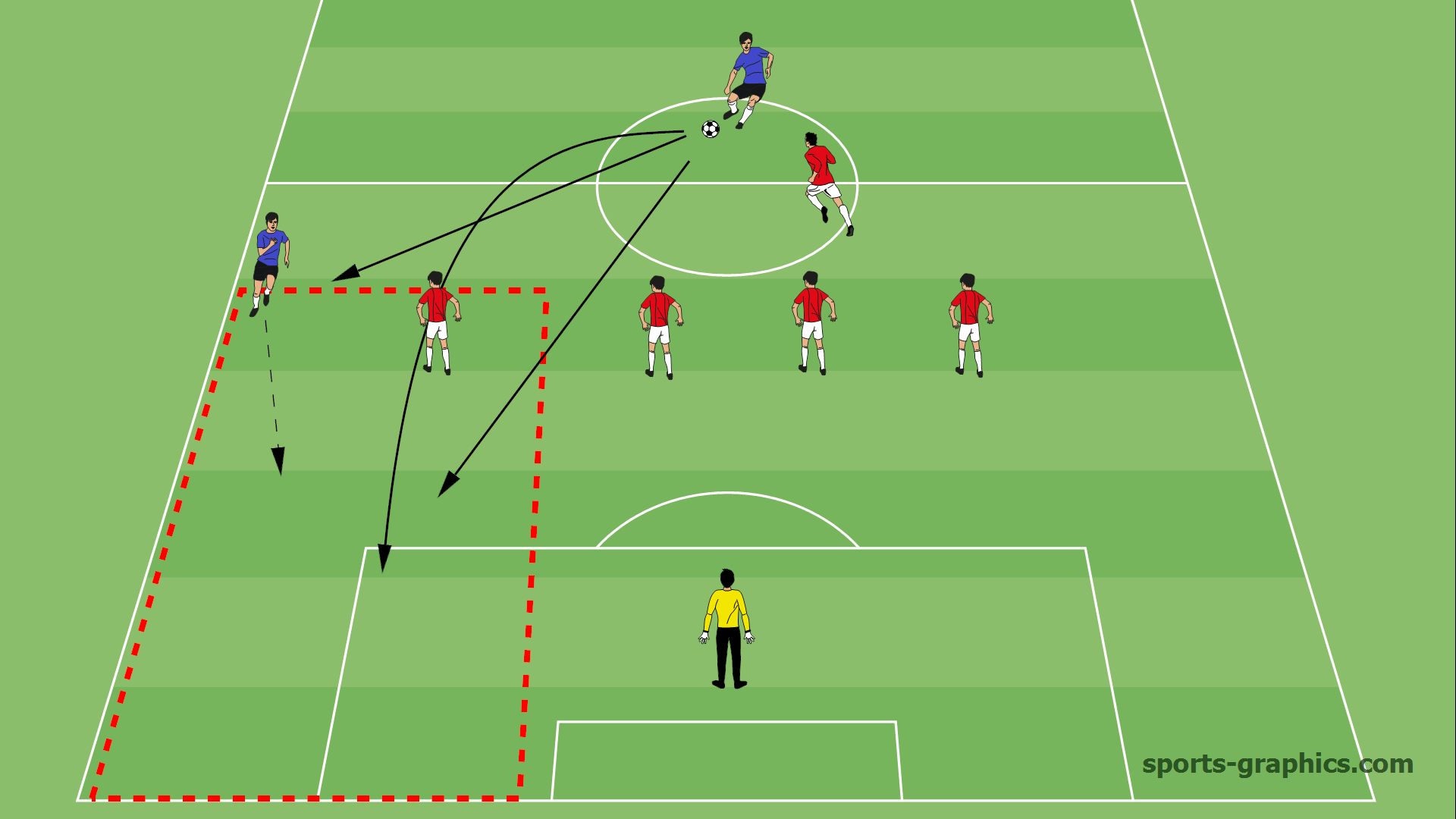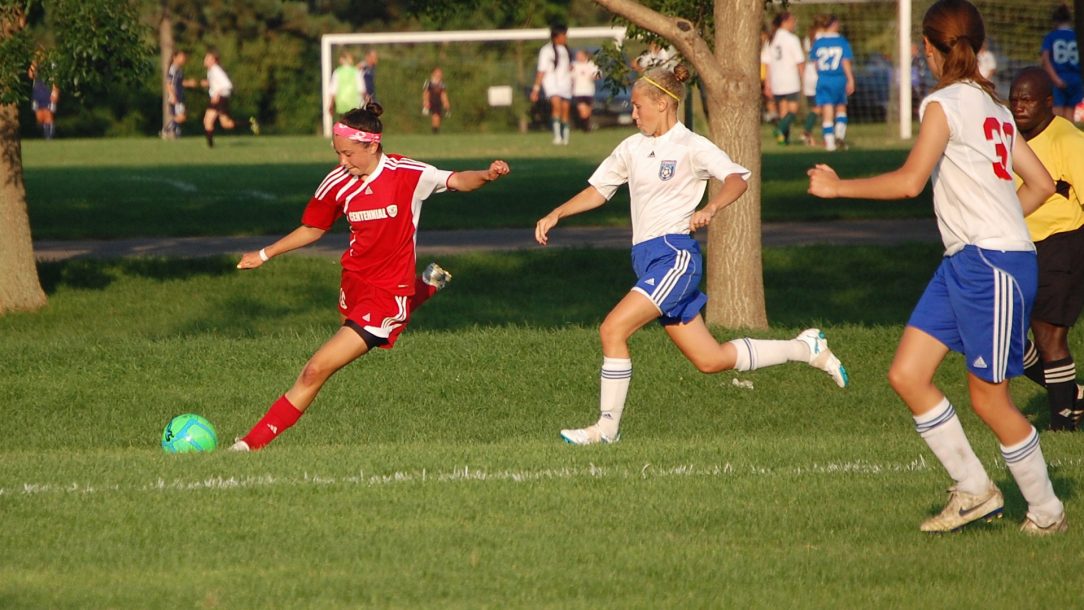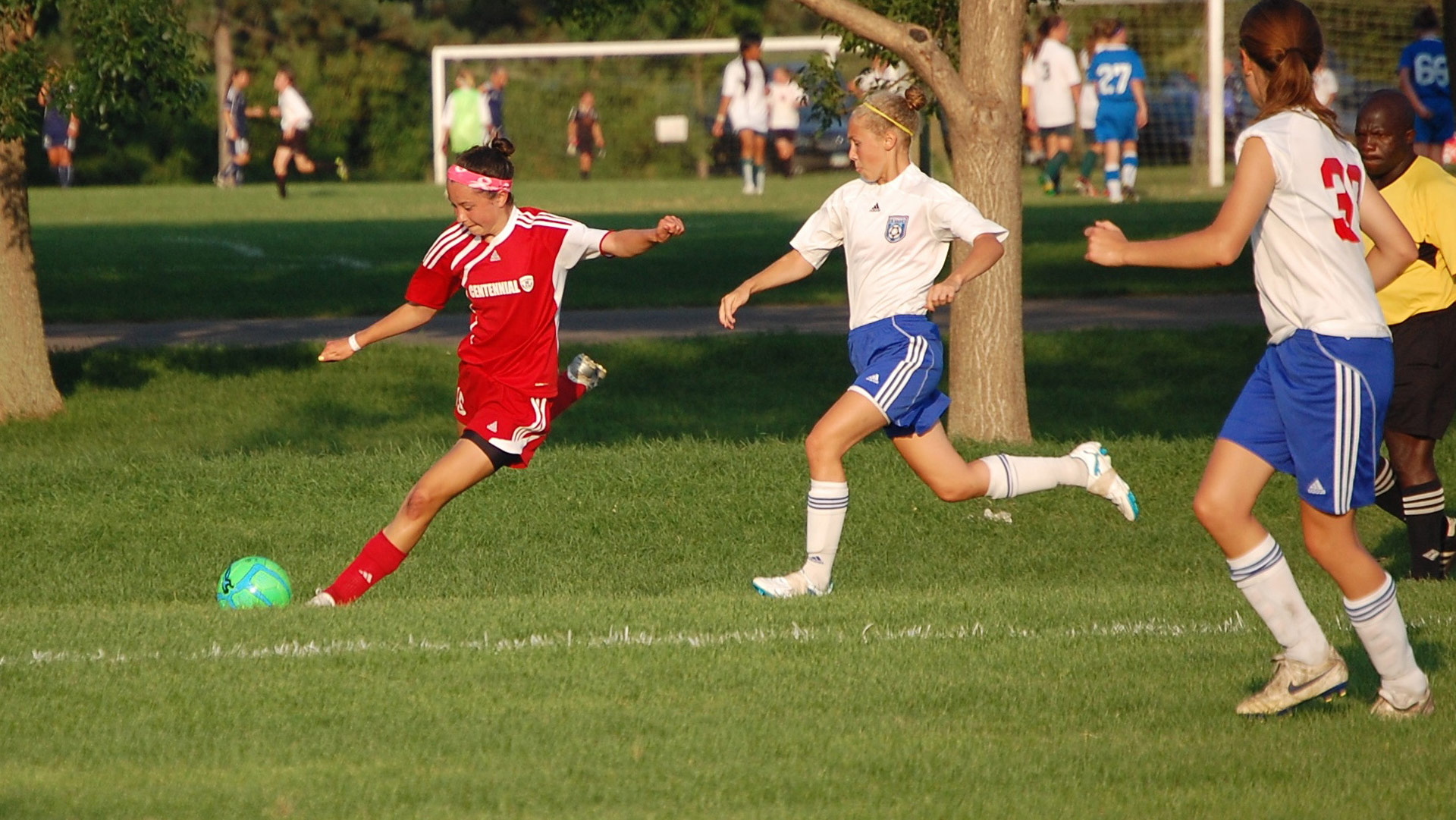In the last article, we focused on how to master wrong-facing attackers. This article focuses on zone marking right-facing attackers in some challenging situations: situations where wingers start to run into the space behind you.
During my career, I found it very beneficial to my personal development to gain broad experience of two types of defensive play: the zone-oriented defence game on the Norwegian national team and the marking-oriented defence game in the Bundesliga.
During my career, I found it very useful to gain broad experience of two types of defensive play:
These diverse experiences allowed me to master two different defence strategies for my own game and helped me to develop a whole new perspective.
Instead of evaluating these two defensive methods according to wrong vs. right, it is must be better to adopt a more goal-orientated approach.
It’s clearly more difficult for a player to operate a zone defensive approach than it is for them to adopt a marking-oriented defence. This is because players who are seeking to defend a zone have a lot more things to focus on and deal with. You have to focus on the ball, the attacking player(s), your teammates, and a dynamic “offside line”. This is a complex exercise, and it will take time before you can master the different situations that may emerge.
The zone-oriented defence game on the Norwegian national team and the marking-oriented defence game in the Bundesliga.
The football players of today are becoming increasingly strong on a tactical level. They are better equipped to defend themselves collectively; however, when it comes to their marking play, they probably experience the same, if not greater, challenges that I encountered in my time as a professional player. Many players struggle to get control of the attacking players, and they don’t know why.
Let’s find out by taking a look at some of the key situations that many defensive players struggle with in the marking game, regardless of the distance between themselves and the attacking player.
Instead of evaluating these two methods according to wrong vs. right, it’s better to adopt a more goal-orientated approach.
Why You Need to Get Control of a Right Facing Winger
Whether attackers are facing the wrong or right way can have a big influence on their game. Right facing players are often a big threat, while wrong facing players are much more limited in what they can do.
It’s about controlling the players and the space, regardless of the team’s preferred approach.
Situation
You are playing in the left back position and have a right facing winger on your outside. One of their midfielders has the ball. He or she is in the middle of the pitch, is not under any pressure, and can pass the ball into the space between you and the nearest centre back. The winger is running behind you and can freely cross the ball in front of the goal without you being able to prevent him or her from doing so.

Figure: Giske Defending. Credit: www.sports-graphics.com
You are playing in the left back position and have a right facing winger on your outside.
Issues
Positioning
Many players struggle with their positioning.
- How should you position yourself to secure the best conditions by which you can prevent passes, cover space, and win duels in a situation such as this?
How should you position yourself to win duels in a situation such as this?
Defending Position
Many players are not conscious of their defending position and often turn 180° before they start running.
- Which defending position should you choose?
Focus
This is a challenging situation. You must simultaneously position yourself relative to both the attacker, the position of the ball, the right-winger on the outside of you and the “offside line”. Moreover, you will find it difficult to see the player with the ball and the right winger simultaneously.
- What should you focus on?
Which defending position should you choose? And what should you focus on?
Solutions and Tips
Positioning
Positioning is challenging, and there are few, if any, definitive answers. It’s very situational, and it must be learned through experience. To master this skill, you should have a relationship to the positioning both horizontally (width direction) and vertically (longitudinal direction).
Horizontal positioning (width direction)
A natural starting point to deal with this situation is to position yourself about ⅓ of the distance between the attacker (with the ball) and the winger. This is approximately the distance you may need to allow yourself to control the winger.
The disadvantage of this position is that you will place yourself further inside the field and that will give the winger more space. In addition, the space between the winger and the ball will become even wider when the ball is played over or outside you. This will give the wingers the space they need to take liberties, and you will find it difficult to prevent crosses from being played.
Tip 1. Prioritize inside threats
At times, it may be advantageous to move further into the field because the threat from the centre is typically greater than that on the wings and your objective should be to minimize this threat. There may be another attacking player who is in the space between you and the centre back. That said, too many players position themselves too far inside without reason and open up spaces in which the ball can be passed to the waiting wingers on the outside.
Tip 2. Close space on the inside when the opportunity arises
When there is a small amount of space behind you, in some situations it may be smart to position yourself a little farther inside to prevent or snatch passes along the ground. Since the space behind you in such situations is often small, meaning it is difficult to pass a ball over your head, it is much easier to predict the game. It is also important to avoid the attacking player passing the ball to the winger on the inside close to the goal. If this happens, you and your team will have lost control of your defending game. In this situation, it is natural for players to choose a more frontal defending position to try and snatch passes.
Prioritize inside threats.Close space on the inside when the opportunity arises.
Tip 3. Concentrate on the winger when you can
If the winger is the only threat at that time, you may want to position yourself a little deeper into the pitch to get better control of him or her. It often doesn’t matter if you position yourself slightly behind the offside line in such a situation. It then becomes more difficult for the attacking player with the ball to involve the winger in the game.
Vertical positioning (longitudinal direction).
One mistake many young players make is to position themselves too high up the pitch. This is probably due to the fact that they focus exclusively on the ball (the ball is like a magnet) and they forget both their teammates and opponents. This often results in huge opportunities for the attacking team, and it is relatively easy for the counterparty to exploit the large spaces that become available.
Concentrate on the winger when you can.Communicate with the (nearest) centre back.
Another mistake that recurs at every level is that fullbacks (especially fullbacks on the opposite side of where the game takes place) occasionally position themselves deep in the field behind the offside line. This situation is also challenging, especially when the defence game is dynamic.
Tip 4. Communicate with the (nearest) centre back
Since it is normally one of the centre backs (closest to the ball) that sets the offside line, it is important that the defenders take responsibility and have a good and continuous communication (verbal and body language) with their teammates in the back-line using vertical movements (pumping and offside play).
Defending position. Too many players subconsciously assume the frontal defending position. The advantage of this position is that it gives you good working conditions to see both the ball and the wing player at the same time. However, it is often not recommended because turning 180° to run in the defence direction takes far too long! You will generally lose against right-facing players when the ball is passed into the space behind you. This is perhaps the biggest challenge you may encounter and what creates the most problems for players in these situations.
Tip 5. The chase defending position is the best in the longitudinal direction
Be conscious of what defending position you choose. Select the chase defending position in the crucial moment with your body facing the ball so you can see the ball and the attacker with the ball. The chase defending position is clearly the best position from which you can run with the wing player. One disadvantage of the chase position is that you will find it harder to keep an eye on the winger. Let’s look at this challenge in more depth.
Focusing
Focusing on the ball (attacker with the ball inside), winger (outside) and your teammates (watching the offside line) simultaneously is very challenging, especially if you have adopted the chase defending position. Do you focus on the attacker with the ball while struggling to see the winger? Or do you focus on the winger meaning you cannot see the attacker with the ball? How can you solve this situation?
Tip 6. Fix your gaze between the attacker with the ball and the winger
Turn your head toward a point on the pitch in between the attacker who has the ball and the winger. This will allow you to watch players as the action unfolds. To do this, you need to change what is probably a habit of a lifetime in terms of your game: you need to stop focusing on the ball at all times.
The chase defending position is the best in the longitudinal direction.Fix your gaze between the attacker with the ball and the winger.
Tip 7. Start running if you lose control (before the critical moment)
Sometimes, the winger may move out of your sight. If you sense that the attacker is getting ready to pass a ball into the space on your side, do not hesitate; start running to win the duel against the winger! At the very least you will place him or her under pressure and prevent the ball from being crossed in front of the goal. Too many players are passive and hesitant in these situations without due reason. The alternative is to set the winger offside by running in the opposite direction. However, this is probably not a good idea when you have lost control of the situation.
Start running if you lose control – before the critical moment.


